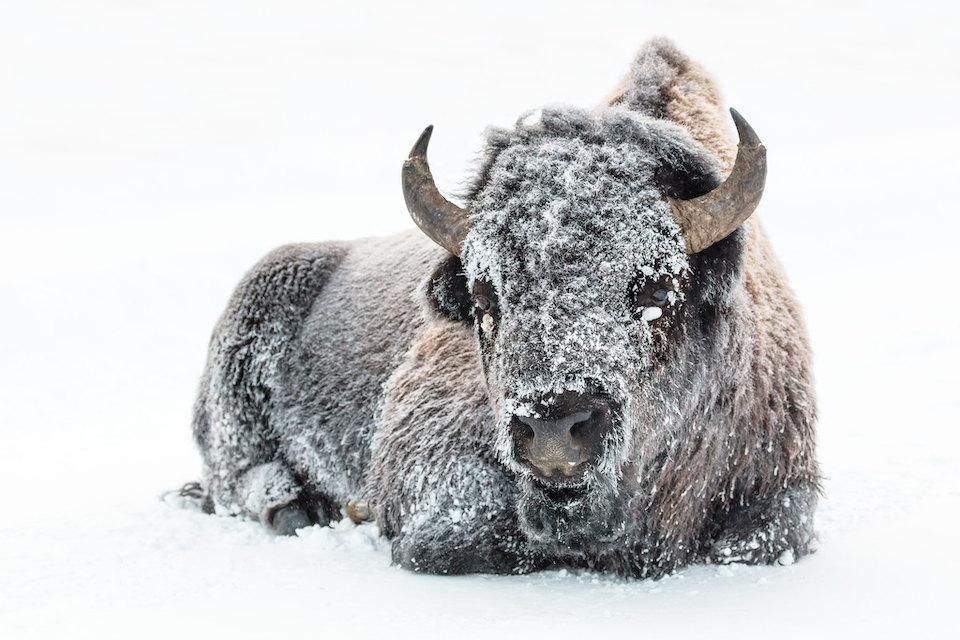
Bison once again will be able to roam wild in Montana/NPS, Jacob W. Frank
After nearly eight years of study, Montana officials have agreed to allow wild bison to once again roam their state. But they say more study must be done before decisions are made as to where those bison can roam.
Wildlife groups applauded the decision Tuesday to open the state's borders to wild populations of the national mammal, but were perplexed by the decision to put off identifying areas of Montana that bison could be returned to.
“This long-awaited plan is really a 30,000-foot vision document. While we are encouraged that Montana will now officially restore wild bison to the state, it is unfortunate that the state wildlife agency leading the charge did not offer any specific sites where bison can return," said Chamois Andersen, senior Rockies & Plains representative for Defenders of Wildlife.
“Defenders of Wildlife will advocate and help develop proposals for specific sites for wild bison restoration outside of Yellowstone," she added. "These include the Badger-Two Medicine/Chief Mountain areas of the Helena-Lewis and Clark National Forest and the Charles M. Russell (CMR) National Wildlife Refuge.”
Officials with Montana Fish, Wildlife and Parks said pertinent stakeholders need to be consulted before bison herds are allowed to roam free.
“Wild bison have been successfully restored under a variety of management regimes and in a wide range of ecosystems,” said FWP Director Martha Williams. “But in order for a proposal to proceed in Montana, it must be devised collaboratively, taking into account the concerns of landowners and communities small and large, and it should follow the model of other successful wildlife restoration efforts.”
The news came upon the completion by state officials of the Programmatic Environmental Impact Statement on the restoration of bison in the state. This EIS is the first official decision in favor of allowing wild free-ranging bison to return to their historic range outside of Yellowstone National Park.
Despite the arrival of the EIS, it still could be years before wild bison are seen in Montana.
What determines the appropriateness of a specific bison restoration proposal is not the specific land ownership, but rather how it is guided by state law and the recommendations laid out by stakeholders during development of the EIS. Any concrete proposal for bison restoration will have to undergo a site-specific environmental analysis and include a public review process.
Completion of all the steps necessary to implement a bison restoration effort will take considerable time, even for the smallest of test projects. Garnering public input, not to mention support, can take months or years. -- Montana Fish, Wildlife and Parks
“This decision will give FWP greater flexibility to protect the diverse values on the landscape, including the desire by some to restore bison,” Williams said. “At its core, the success of any bison restoration program will be dependent upon people who are affected, directly or indirectly, by bison on the landscape. Only through building trust and working diligently to address various interests will any restoration effort be successful.”
Defenders of Wildlife maintains there is public support in the state for free-roaming bison. The wildlife advocacy group notes note that public opinion polls in 2011 and 2012 "found 69 to 70 percent of voters are in support of bison restoration. The survey in 2012 showed voters are also in favor of bison in and around the 1.1-million-acre Charles M. Russell National Wildlife Refuge. In addition to public lands, 68 percent of Montanans support providing bison to Native American tribes for relocation to tribal lands."
Yellowstone bison comprise the nation’s largest wild bison population with a population estimated around 4,000, and are among the few bison herds in the country thought not to carry cattle genes. For this reason, Yellowstone bison are highly valued for their genetics, and considered to be crucial to the long-term conservation of the species across its historic range.
During the many years Montana officials spent on the EIS, Defenders has worked with interested parties to build bison herds on private lands in the state. They and conservation partners worked with Montana’s tribes in 2012 and 2015 to bring Yellowstone bison from quarantine facilities to the Fort Peck and Fort Belknap Reservations. Those herds now total more than 400 animals.
Just last month 33 Yellowstone bison that had been held in quarantine to ensure they were free of brucellosis, a disease that can cause spontaneous abortion in ungulates, were shipped from their pasture near Gardiner to the Fort Peck Indian Reservation. A previous transfer of 55 bison to Fort Peck Indian Reservation occurred last August.



Comments
Good dissertation. Please read and digest JA Bailey PhD's "American Plains Bison Rewilding An Icon." This wildlife biologist's blueprint for wild bison's restoration broad brushes and details issues to be considered. Urge your congressmen to have USFWS declare the wild bison an "Endangered Species" and to fully fund the "Endangered Species Act." I urge you to contact me also, as I am terribly interested in this subject, and know a lot of people involved. Thank you very much.
<[email protected]>
816.561.3526